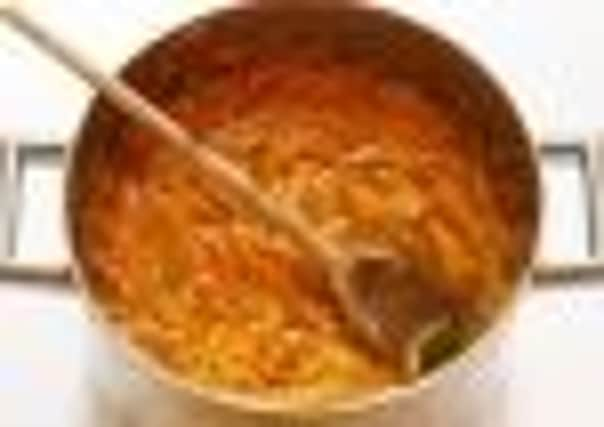Get the peelgood factor and make your own marmalade


In the dull cold month of February, citrus fruit is at its best, in particular, the Seville orange. When juiced, shredded and cooked slowly with sugar these strange tasting fruits alchemise to rich amber coloured marmalade.
The tartness and depth of flavour achieved by making marmalade yourself is hard to match by anything shop bought.
Advertisement
Hide AdAdvertisement
Hide AdMarmalade is a British invention going back several hundred years. The word “marmalade” is derived from the Portuguese term for preserved quince, or marmelo. Making marmalade is surprisingly cheap. Mine cost about 60p per jar. It is also easy to make especially if you can co-opt a helpmate to assist you with shredding the peel.
Although Seville oranges are said to make the best marmalade, I have to speak up for limes as they also make a delicious sweet, sour marmalade which retains all the zingy flavour of lime zest.
It is slightly fiddlier to make than orange marmalade but well worth a try. It can also be made all year round.
Orange marmalade
1.5kg Seville oranges, rinsed, juice of 2 lemons, 4 litres water, 3 kg granulated sugar, 50 cm square of muslin
Advertisement
Hide AdAdvertisement
Hide AdJuice the oranges and save any pith and pips. Put the juice in a large stainless steel saucepan together with the juice of two lemons.
Tie up the pith and pips in the muslin to make a bag and suspend this in the saucepan by tying to the handle of the saucepan with string. Cut the orange rind into quarters and shred as finely as you prefer. At this point you may need some help to speed things along. Some people love very thick cut marmalade but most prefer it finely shredded.
Add the shredded orange rind to the pan with four litres of water and bring to the boil. Lower the heat and simmer for two hours. Remove the muslin bag from the saucepan and allow to cool slightly before squeezing it gently over the marmalade. The gluey liquid that oozes out is rich in pectin and will set the marmalade. Add the granulated sugar, stir until dissolved and then boil vigorously for 20 minutes.
Seville oranges contain so much pectin you need not be afraid your marmalade will not set. But just to check it has reached setting point take a spoonful of the hot marmalade and place on a cold saucer. Pop it in the fridge and leave for one minute. Push the setting marmalade with a finger nail and if it wrinkles it has reached setting point and is ready to decant into jars. If not boil away for another five minutes and try again.
Advertisement
Hide AdAdvertisement
Hide AdWhen setting point has been reached, remove from the heat and allow to cool a little before decanting the marmalade into sterilised jam jars.To sterilise jam jars and their lids, wash in warm soapy water, rinse and place in an oven preheated to 150C/Gas mark 2, for 10 minutes.
Cover the surface of the marmalade with waxed paper and seal well with a metal lid or stretched cellophane and an elastic band. Remember to label the jars.
Lime marmalade
6 large limes (650g), 1.5 tbsp lemon juice, 1.5 litres of water, 1.5 kg granulated sugar, 50cm square muslin, 6 sterilised jam jars
Thinly pare the peel from the limes taking care not to remove any pith. Shred the peel as finely as you can. Cut the limes in half and juice. Place the lime juice and water in a large stainless steel saucepan. Tie the pith in muslin and place in the saucepan. Bring the lime juice and water to the boil and then reduce the heat and simmer for one and a half hours.
Advertisement
Hide AdAdvertisement
Hide AdRemove the muslin bag from the saucepan, allow to cool and then squeeze gently over the saucepan. Add the sugar and cook over a low heat until it has dissolved. Bring to the boil and boil rapidly for 15 minutes until setting point is reached (see above).
Remove from the heat and allow to cool slightly before pouring into sterilised jars. Then cover and label.